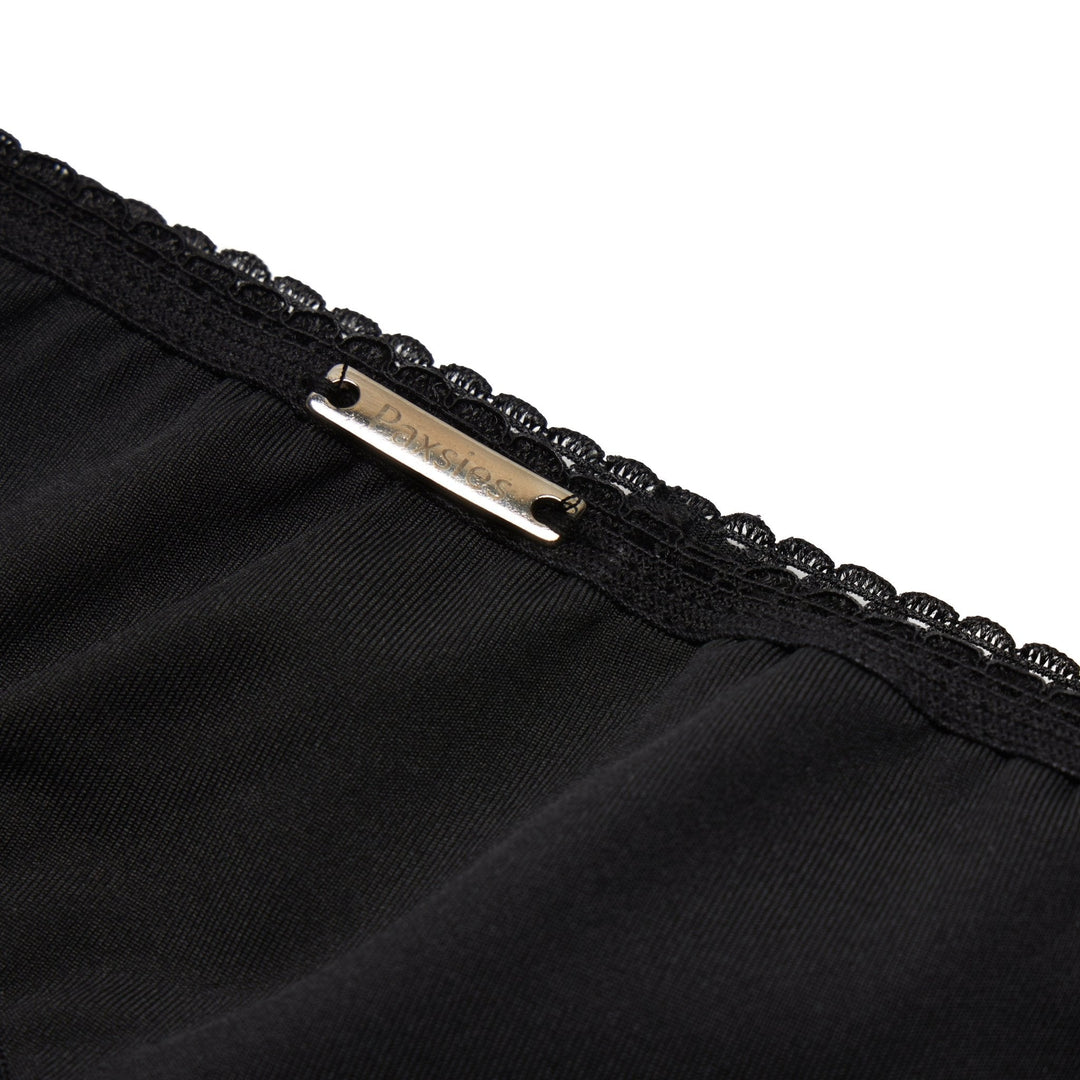FTM Top Surgery - What Are Your Options?
Disclaimer: This article uses medical terms to describe body parts that one may or may not identify with.
For transgender people whose sex assigned at birth does not match their gender identity, top dysphoria, or the discomfort with the presence of chest tissue (or lack thereof) can be extremely distressing. Female-to-Male, or FTM Top Surgery is a blanket term used to refer to a set of procedures designed to remove or reduce chest tissue to masculinize the chest. It can be immensely helpful to trans men and transmasculine people in reducing top dysphoria, improving their self image and allowing them to be more comfortable in their bodies.
In this article, we'll walk you through 4 main types of surgical procedures for FTM top surgery, their advantages, disadvantages, and risks.
1. Double Incision Top Surgery

Double Incision top surgery is a procedure usually done for patients with medium to large (or drooping/sagging) chests or patients with excess skin on their chest. This is the most common FTM top surgery procedure. The Double Incision procedure is also called a "bilateral mastectomy with free nipple grafts".
Two incisions are made to perform this surgery: the first is made at the lower section of the chest muscle, and the second is made on top of the chest muscle. The surgeon then pulls the skin back and removes any fatty chest tissue, and then sculpts the remaining tissue to give the chest a more masculine shape. Following this, the nipple is removed and resized (if necessary). The two incisions are joined and stitched together, and the nipple is grafted onto the chest to provide a more natural-looking and masculine chest. Some people choose to forego the nipple graft as well, so you're free to choose whatever makes you most comfortable.
At the end of the procedure, patients are generally left with two scars: one under the nipple (that may or may not be joined at the center) and one around the areola (if you opted to get a nipple graft). A great advantage of this procedure is that it is the most reliable procedure to gain the best top surgery results. Since the surgeon has greater access to the chest tissue, it allows for more effective chest tissue removal and sculpting. Because the nipple is removed, it can also be resized and grafted back onto the chest in the optimal position. This procedure, however, also comes with its disadvantages. Because the nipple is fully removed, patients that opt for double incision surgery may also lose nipple sensation.
2. Inverted-T Incision
The Inverted-T surgical procedure is similar to Double Incision top surgery, and is ideal for patients with larger chests or patients with loose skin on their chest.
Similarly to Double Incision surgery, the Inverted-T procedure starts with two incisions made on the top and bottom of the pectoral muscle, with an extra incision made from the areola to the bottom incision. The chest tissue can be removed and the remaining tissue can be reshaped as with double incision surgery. After sculpting the chest, the top and bottom incisions are joined, and the incision made from the areola to the bottom of the chest muscles is stitched together as well.
This surgery gives patients two scars (per side): one under the chest muscle, which comes from the two initial incisions being joined together, and one from the areola down to the first incision. These scars form the "inverted-t" shape that gives this procedure its name. The main advantage of this procedure over double incision top surgery is that it removes the need for a free nipple graft since the nipple stays on the stalk, and can be resized and positioned on the chest without removing it during surgery. This also means that nipple sensation is better preserved with the Inverted-T procedure than with Double Incision surgery. Because it's so similar to the double incision procedure, Inverted-T top surgery still gives surgeons good control over chest tissue volume and shape.
Of course, this comes with disadvantages as well. One of the more obvious disadvantages is the additional scarring from the vertical incision. Also, because the nipples stay on the stalk, some tissue needs to stay on the chest to supply blood to it. This means that results from the Inverted-T procedure may not be as flat as double incision results. It's also important to keep in mind that even if the procedure was designed to retain nipple sensation, it may take time for sensation to fully return, and patients that choose this surgery might experience some numbness during recovery.
3. Peri-Areolar Top Surgery
Peri-Areolar top surgery, or peri, is ideal for people with small/medium chests and minimal excess skin.
This procedure involves making two incisions - the first circular incision directly around the areola, and a second larger concentric incision made to remove the excess chest tissue. The nipple is repositioned and reshaped, if necessary, before the skin is pulled towards the center and the incisions are closed. If there is excess chest tissue that needs to be removed, a third vertical incision may be made under the nipple.
Peri-areolar top surgery generally leaves patients with one scar around the areola. If the third incision is made, then patients will have an additional scar under the areola as well. With this procedure, the nipple stays on the stalk, which preserves nipple sensation. The surgeon is also able to reposition and reshape the nipple, to ensure a more natural look. This procedure also allows for adequate contouring for the chest. Also, peri-areolar top surgery leaves less noticeable scars compared to the double incision and inverted-t procedures. However, this procedure also carries the highest risk of needing top surgery revisions down the road.
4. Keyhole Top Surgery
People who have small chests and very good skin elasticity are good candidates for Keyhole top surgery. This is the most minimally-invasive top surgery procedure.
For this procedure, only one semi-circular incision is made just under the areola for the removal of excess chest tissue. If necessary, the nipple can be resized before the incision is closed.
Keyhole top surgery procedure provides good results with minimal scarring, as this procedure leaves only one small scar just under the nipple. Keyhole top surgery also allows the surgeon to reshape the nipple and contour the area, which contributes to a natural-looking chest. However, this procedure cannot fix the presence of excess skin in the chest. Also, the nipple cannot be repositioned with this surgery, so nipple placement of the resulting masculine chest may not be ideal.
What are the Risks?
Surgeries are never risk-free. Regardless of which procedure you get, top surgery is very invasive, and comes with a variety of risks and complications, including (but not limited to) poor scar healing, infections, and bleeding. Some surgical procedures carry more risks than others. For instance, in surgeries where the nipple is fully removed, like the double incision procedure, the risk of permanent loss of nipple sensation is higher than for other procedures.
Different surgical procedures also have different recovery times, so it's important to check with your plastic surgeon about when it's safe for your to return to work or school. Furthermore, while your surgeon will do their best to give you the best possible aesthetic result, all FTM top surgery carries the risk of asymmetrical nipple placement and/or chest walls, though this asymmetry can be fixed with a revision surgery. All procedures listed above are usually done under general anesthesia, which carries additional risks after waking up from sedation, such as dizziness, confusion, nausea, vomiting, and chills.
Final Thoughts
FTM top surgery is extremely helpful in alleviating gender dysphoria among trans men and transmasculine individuals, and can significantly increase their self-esteem. Following top surgery, patients will no longer need to bind, which eliminates the risks involved with chest binding. While FTM top surgery is common amongst transmasculine people, it is important that you choose a trustworthy and qualified cosmetic surgeon. During your consultation, it's equally important that you communicate openly with them about your expectations and goals with top surgery to ensure that you get the best results.
Top surgery isn't for everyone, and it's important that you consider the benefits and risks, including potential complications, of top surgery before you decide to undergo it. We suggest that you do your own further research and read up on what to expect before undergoing these procedures so you can set realistic expectations for the results of top surgery. Remember, the best procedure for you depends on a variety of factors, including skin elasticity, and the size and shape of your chest.
All procedures will leave patients with scarring, and it's important to be patient with yourself and with your scars. The redness, swelling, and bruising will go away, and your scars will fade over time. You can check out this site for before and after photos of FTM top surgery.
As with all things, having a good support system is highly beneficial for people that choose to undergo FTM top surgery. All the procedures listed above are major surgeries, and while FTM top surgeries are generally outpatient procedures (meaning patients don't usually have to stay overnight at the surgery center), many patients require help after surgery and during the recovery phase, especially in doing physical tasks like lifting, pushing, or any strenuous activities. Patients may also need help with post operative care. We'll release another blog post about recovering from FTM top surgery soon, so stay tuned!
Sources
All photos come from https://www.genderconfirmation.com/surgery/









